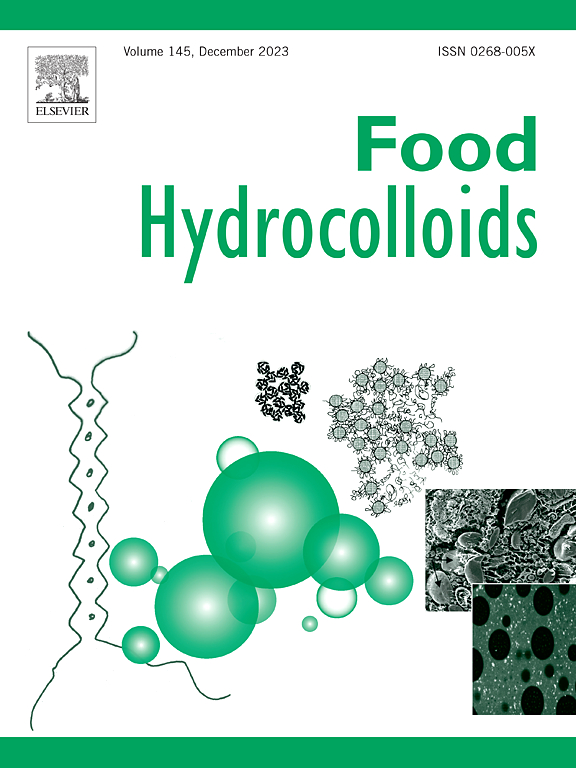The air-water interfacial properties of bovine serum albumin with pH-shifting treatments by hydrogen-deuterium exchange mass spectrometry
IF 11
1区 农林科学
Q1 CHEMISTRY, APPLIED
引用次数: 0
Abstract
In this study, foam ability and foam stability of proteins with pH-shifting treatment were investigated. The treatment of pH-shifting was a straightforward and efficacious approach to modify protein structures for improving the foaming properties of proteins. This study adopted the methods of hydrogen-deuterium exchange mass spectrometry (HDX-MS) and interfacial rheological to analyze the effects of pH-shifting treatments on the representative flexible globular protein. The effects of pH-shifting treatments on the physicochemical and functional properties of bovine serum albumin (BSA) were systematically investigated. The pH-shifting treatments could improve the functional properties of BSA, especially its foam ability. The results showed that the foam abilities of BSA with pH 3 and pH 10 shifting treatments (BSA-pH 3 and BSA-pH 10) were enhanced compared with the control, but their foam stabilities weakened. And the contents of α-helix were reduced, and the surface hydrophobicities were increased. The viscoelastic modulus, elastic modulus, and viscous modulus of the pH 3 and pH 10 shifting treated protein film at the air-water interface were reduced. The HDX-MS results showed that for both BSA-pH 3 and BSA-pH 10 more peptides were adsorbed to the air-water interface (from 3 to 7) and their solvent accessibilities increased (the number of the solution-accessible peptides increased from 2 to 8 for BSA-pH 3 and from 2 to 6 for BSA-pH 10). Thus, the structure of BSA-pH 3 showed more significant flexible than BSA-pH 10. These results demonstrated that pH-shifting treatments could lead to significant changes that could increase the potential application of BSA in the food foam system. This study could provide a new idea for an in-depth investigation of the effects of altered pH conditions on the structural rearrangement mechanisms of interfacial proteins.

求助全文
约1分钟内获得全文
求助全文
来源期刊

Food Hydrocolloids
工程技术-食品科技
CiteScore
19.90
自引率
14.00%
发文量
871
审稿时长
37 days
期刊介绍:
Food Hydrocolloids publishes original and innovative research focused on the characterization, functional properties, and applications of hydrocolloid materials used in food products. These hydrocolloids, defined as polysaccharides and proteins of commercial importance, are added to control aspects such as texture, stability, rheology, and sensory properties. The research's primary emphasis should be on the hydrocolloids themselves, with thorough descriptions of their source, nature, and physicochemical characteristics. Manuscripts are expected to clearly outline specific aims and objectives, include a fundamental discussion of research findings at the molecular level, and address the significance of the results. Studies on hydrocolloids in complex formulations should concentrate on their overall properties and mechanisms of action, while simple formulation development studies may not be considered for publication.
The main areas of interest are:
-Chemical and physicochemical characterisation
Thermal properties including glass transitions and conformational changes-
Rheological properties including viscosity, viscoelastic properties and gelation behaviour-
The influence on organoleptic properties-
Interfacial properties including stabilisation of dispersions, emulsions and foams-
Film forming properties with application to edible films and active packaging-
Encapsulation and controlled release of active compounds-
The influence on health including their role as dietary fibre-
Manipulation of hydrocolloid structure and functionality through chemical, biochemical and physical processes-
New hydrocolloids and hydrocolloid sources of commercial potential.
The Journal also publishes Review articles that provide an overview of the latest developments in topics of specific interest to researchers in this field of activity.
 求助内容:
求助内容: 应助结果提醒方式:
应助结果提醒方式:


